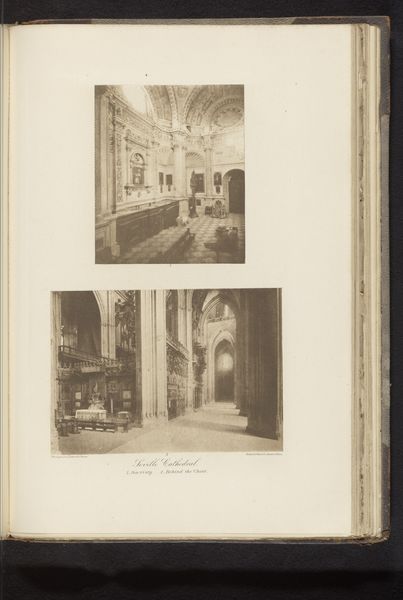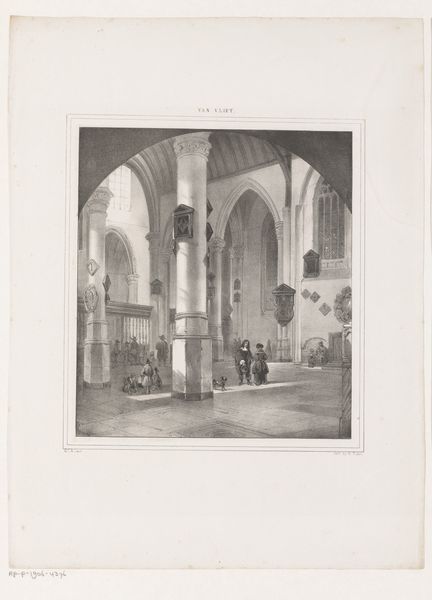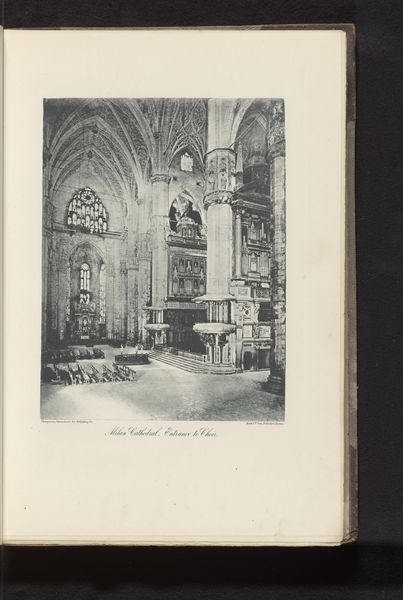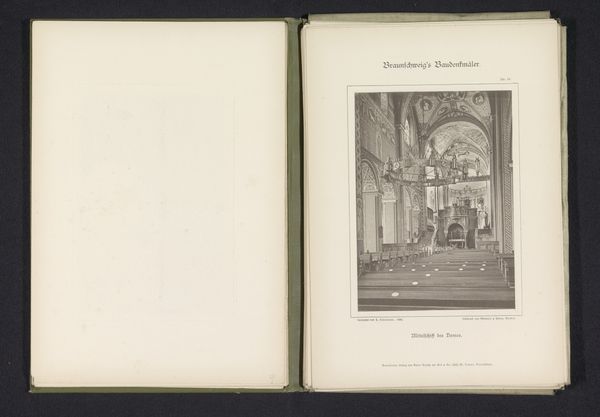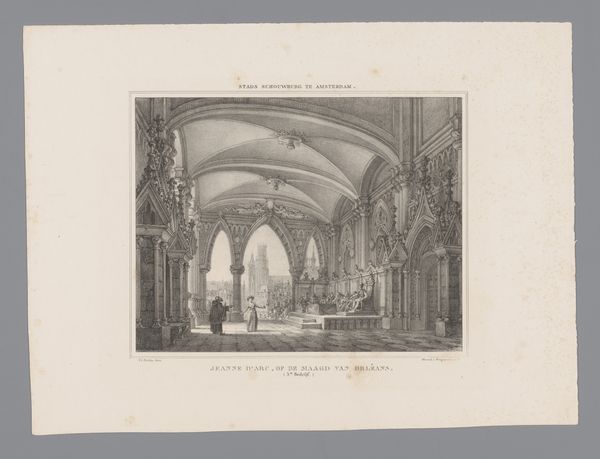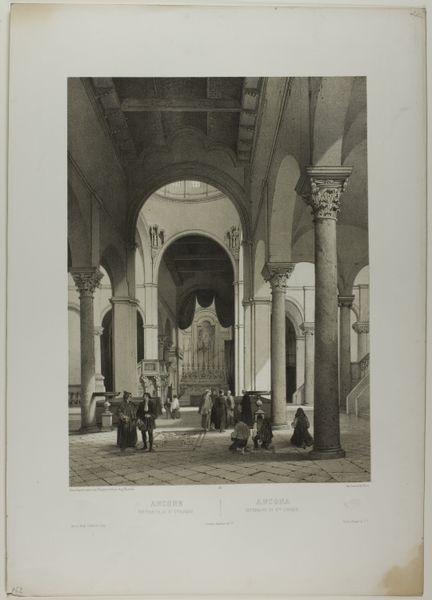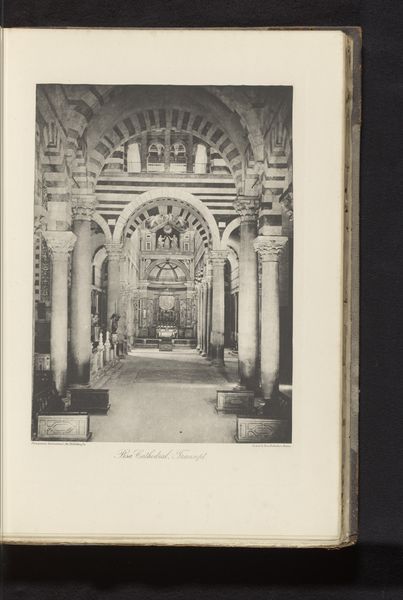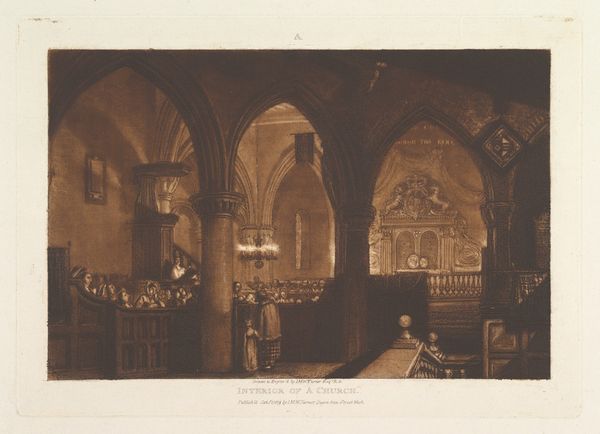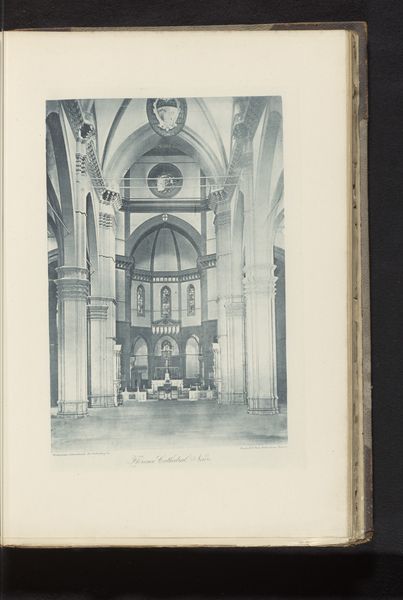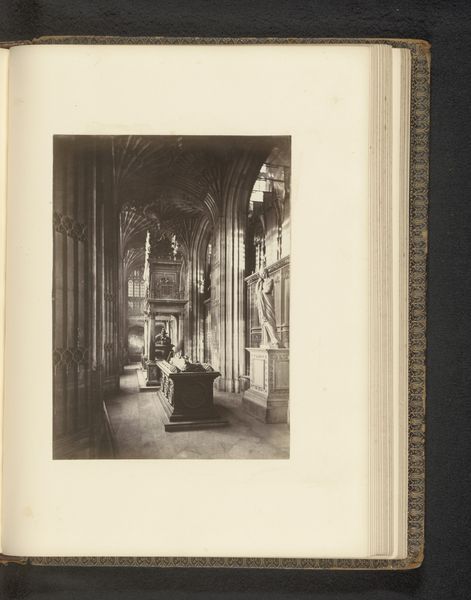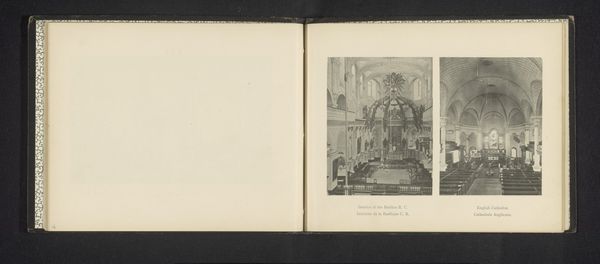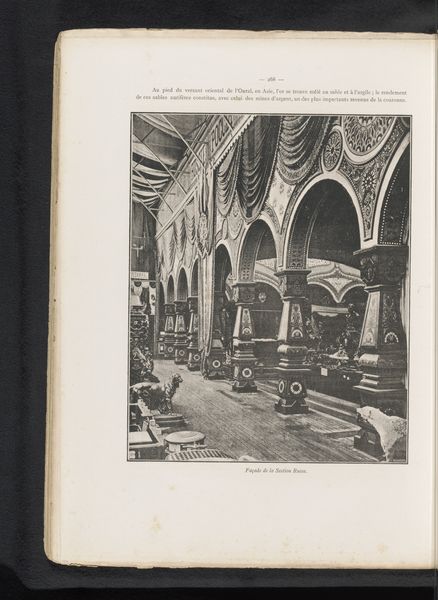
print, photography, gelatin-silver-print, architecture
#
byzantine-art
#
ink paper printed
# print
#
landscape
#
photography
#
gelatin-silver-print
#
history-painting
#
academic-art
#
architecture
Dimensions: height 245 mm, width 300 mm
Copyright: Rijks Museum: Open Domain
Editor: We're looking at a gelatin silver print from before 1886, titled "Chapel and the Nave of the Cathedral of Naples". It showcases two views of the Cathedral's interior. I find the photographic style so evocative; the way light and shadow play within the architectural space gives it such a unique atmosphere. What strikes you when you examine its visual elements? Curator: Immediately, I'm drawn to the composition. Notice the use of vertical lines in the columns which draw the eye upward, emphasizing the height and grandeur of the cathedral. This verticality is then cleverly juxtaposed with the horizontal lines of the altar and architectural details, creating a balanced and stable visual field. Consider also the tonal range; how does the photographer manipulate light and shadow to define form and create depth within what is a relatively flat medium? Editor: It does seem meticulously arranged to capture both depth and detail. The textures of the stone are remarkably well-defined considering its age. I wonder if it speaks to a specific period of photography, given the emphasis on capturing architectural spaces so precisely. Curator: Indeed. The precision and clarity indicate a dedication to detail that aligns with academic principles of representation. What we must ask is how this approach affects the reading of the work. The objective style of photography seeks a kind of truth, presenting the architecture "as it is," which begs the question: Can representation ever truly be neutral? Editor: That’s a great question! Focusing on the formal elements, the use of light and shadow undeniably shapes our perception and directs our gaze. It definitely encourages a closer, more thoughtful viewing. Curator: Precisely. It reveals how much the photograph’s aesthetic design steers us towards a certain understanding of the subject. Thank you for pointing this out. Editor: Thanks so much. That really changed how I see the print now.
Comments
No comments
Be the first to comment and join the conversation on the ultimate creative platform.
